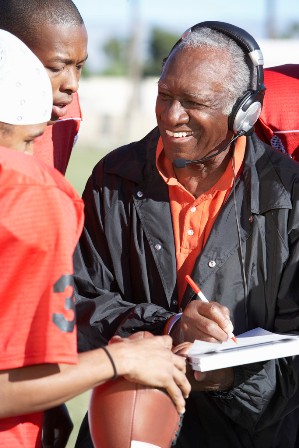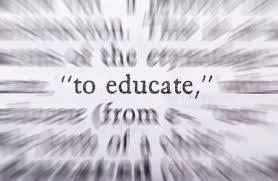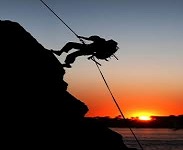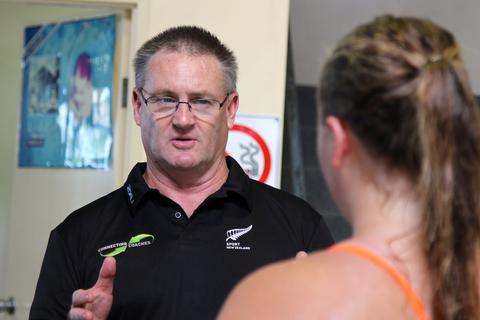Coaching and Visualisation (Imagery): See the Coach You Want to Be.

Many athletes incorporate visualisation (imagery) into their training programs and their preparation for competition.
Usually visualisation involves athletes using their minds to “imagine” (visualise) situations and how they would or should manage those situations when faced with them in real life.
For example, an athlete training for the Olympic Games might visualise the sights and sounds of the Olympic final so that they become familiar with that performance setting.
Visualisation can be a powerful tool in athlete preparation but what about using Visualisation to improve your coaching?
Coaching and Visualisation….See the Coach You Want to Be.
So what is Visualisation (or Imagery)?
Every body dreams.
Everyone has an imagination.
Everyone has laid back in their bed and dreamed about becoming a “Jedi-Knight” or a Formula One racing driver or a world famous actor or of scoring the winning goal in the World Cup Final or winning the lottery. Dreaming and imagining what could be is something all us humans do.
Visualisation is using the power of your own imagination to see, feel and experience something in your mind without actually experiencing it.
So why is this important?
Success or failure in sport is often determined by experience.
Experience is prized above all other things by recruitment agencies, HR departments and other sporting leaders who hire and fire coaches.
Experience, i.e. having proven that you can do the job is what job interviews, job descriptions and sports recruitment is all about.
The problem is that often you don’t get the actual experience you need until after you need it!
How many times have you coached athletes who have failed at their first attempt to win an important race due to their lack of experience at that level of competition?
How many times have you seen teams fall at the final hurdle due to a lack of experience of performing at their best in important games.
Experience is a determining factor of success in every sport and every field of endeavour.
Yet, for many athletes, coaches and teams, you only get one chance: only one opportunity to realise your dreams.
What is needed is a way to live the experience, to feel the experience, to “see” the experience without actually doing it so that you are prepared to manage the emotion of moment when it comes for real.
And that’s where visualisation comes in. You can see it before you have to be it.
Visualisation – how to do it: Making it real.
First of all, learning to visualise is not a big deal. You don’t need to spend a lot of time and money learning how to do it: after all, it is just tapping into the power of imagination that we all have but have lost touch with.
But, the key to doing it effectively is making it real, i.e. making it seem and feel real.
Mastering visualisation means arriving at the big game or the big race or the major event with the calm, composed, confidence that only experience can provide.
Before you commence your visualisation session, do your homework. Talk to people who have experienced the event or game you are targeting and which will be the focus of your visualisation practice.
If possible, get a video of other games, other races and other events held in the competition venue where you and your athletes will be performing. If you can, go to the competition venue, look around, sit in the change-rooms, walk around the warm-up area etc. Take some deep breaths and immerse yourself in the environment where you and your athletes will be facing the pressures of performance.
The more real, the more accurate, the more you can experience visualisation (i.e. as opposed to just seeing a vague image in your mind) the better.
Visualisation: Relaxation and Breathing.
Visualisation is a simple mental skill to learn and master.
Find a nice quiet place and relax. A simple way to relax is to concentrate on deep, slow breathing. A great guide for relaxing breathing is to aim for 5 breaths in one minute by breathing in for a four count, breathing out for a four count and just remaining still and relaxed for a four count before breathing in again (i.e. 12 seconds per breath cycle).
After one minute (i.e. 5 in and an out breaths), begin imagining the situation, the settings, the sights, the sounds and the smells of the target of your visualisation.
Imagine every aspect of the event. The noise. The competition arena. The crowd. Experience the entire experience in your mind.
Here are some practical Coaching Visualisation Exercises for you to try:
- If you are in a competition with a “finals” series and your team is knocked out and doesn’t make the finals, use Coaching Visualisation to imagine what you would do if your team had actually made the finals. How would you plan your week ? How would you select your players? How would prepare for each training session? How would you address the players before they run out for the big game? Spend time visualising how you would coach at your best during the finals series and then next season, when you have to do it for real, you will have no surprises and perform magnificently;
- If you have a big event coming up and you need to be calm, composed, clear and confident for your athletes, try some visualisation. Imagine yourself on the sideline or in the coaching box. See yourself as being calm and composed. Feel your body language as being positive and powerful. See your athletes performing and imagine how you will respond, i.e. with clarity and confidence.
Summary:
- Experience is such a precious commodity in sport, that it make sense to try and find ways of fast tracking it and gaining the experience you need before you actually need it;
- Visualisation (imagery) has long been a tool that athletes have used to help them see and feel the competition environment prior to the actual competition to help them deal with the stress and anxiety which often undermines successful performance;
- However, visualisation (imagery) is just as effective with coaches who, with a little patience and a little practice can use visualisation techniques and their imaginations to learn, grow and win when they need to win.
So give Coaching by Visualisation a Try: See the Coach You Want to Be.
Wayne Goldsmith



0 Comments